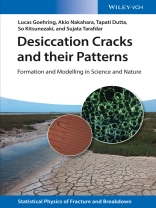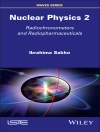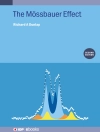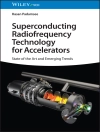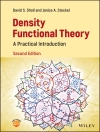Bringing together basic ideas, classical theories, recent experimental and theoretical aspects, this book explains desiccation cracks from simple, easily-comprehensible cases to more complex, applied situations.
The ideal team of authors, combining experimental and theoretical backgrounds, and with experience in both physical and earth sciences, discuss how the study of cracks can lead to the design of crack-resistant materials, as well as how cracks can be grown to generate patterned surfaces at the nano- and micro-scales. Important research and recent developments on tailoring desiccation cracks by different methods are covered, supported by straightforward, yet deep theoretical models.
Intended for a broad readership spanning physics, materials science, and engineering to the geosciences, the book also includes additional reading especially for students engaged in pattern formation research.
Daftar Isi
Preface XI
List of Symbols XIII
1 Introduction 1
1.1 Why Study Drying Mud? 2
1.2 Objectives and Organization of the Book 4
1.3 Approach and Scope 6
References 7
2 Elasticity 9
2.1 On Springs 9
2.2 Deformation, Displacement and Strain 11
2.3 Transformations of Strains, Principal Strains and Volumetric Strain 15
2.4 Stress 17
2.5 Thermodynamics and the Work of Deformation 21
2.6 Linear Elasticity 23
2.7 Different Formulations of Linear Elasticity 26
2.8 Plane Elasticity 29
2.8.1 Plane Strain and Plane Stress 29
2.8.2 Airy Stress Function 31
2.9 Summary 32
2.10 Further Reading 33
References 33
3 Fracture Mechanics 35
3.1 Griffith and Fracture Energy 35
3.2 Stress Concentration 40
3.3 Stress Intensity Factors 41
3.4 Fracture Toughness and the Relationship Between o C and G 44
3.5 Summary of the Critical Conditions for Fracture 46
3.6 An Example:Thin-Film Fracture 47
3.7 Nonlinear and Dissipative Effects of Fracture 53
3.7.1 A Plastic Zone Model of Fracture 54
3.7.2 A Mesoscopic View –The Path-Independent J-integral 56
3.7.3 Dynamic Elasticity and Dynamic Fracture 58
3.8 Crack Path Selection 60
3.9 Summary and Further Reading 64
References 65
4 Poroelasticity 69
4.1 Pressure and Stress in a Two-component System 70
4.1.1 Fick’s Laws 73
4.1.2 Darcy’s Law 74
4.1.3 Network and Total Stress 74
4.2 Linear Poroelasticity 75
4.2.1 Poroelastic Energy Density 77
4.2.2 Poroelastic Constitutive Relations 78
4.2.3 Different Formulations of Poroelasticity 82
4.3 Relationship Between Poroelasticity and Thermoelasticity 84
4.4 Worked Examples of Poroelastic Deformation 86
4.5 Poroelasticity and a Driving Force for Fracture 88
4.6 Summary and Further Reading 92
References 94
5 Colloids and Clays 97
5.1 DLVOTheory 98
5.1.1 van der Waals Potential 98
5.1.2 Electrostatic Potential 101
5.1.3 DLVOTheory and its Limitations 106
5.2 Clays 110
5.3 Summary and Further Reading 114
References 115
6 Desiccation 117
6.1 Surface Tension and Capillary Pressure 118
6.1.1 Contact Lines and Capillary Rise 120
6.2 Solidification Through Evaporation 122
6.2.1 Skin Formation 122
6.2.2 Crystals and Cages 124
6.2.3 Aggregation 126
6.3 Pore-Scale Processes 128
6.3.1 Structure of a Drying Soil 130
6.3.2 Dynamics of a Drying Soil 131
6.4 Continuum Models of Drying 135
6.4.1 Surface Drying 135
6.4.2 Internal Transport: Carman–Kozeny 139
6.5 Further Reading 140
References 141
7 Patterns of Crack Networks in Homogeneous Media 145
7.1 Introduction 145
7.2 Experimental Observations 146
7.2.1 Sequential Fragmentation and Length Scale Selection 148
7.2.2 Scaling of Crack Width 152
7.2.3 Distribution of Angles Between Cracks 153
7.3 Directional Drying 154
7.4 Characterizing the Crack Pattern: 2D View 155
7.4.1 Scale Invariance in Crack Patterns: Self-Similar and Self-Affine Structures 155
7.4.1.1 Scale Invariant Crack Width Distribution 156
7.4.1.2 Fractal Dimension of the Crack Edge 157
7.4.1.3 Self-Affinity of the Fracture Surface 158
7.4.1.4 Fractal Fracture Mechanics 160
7.4.2 Topology and Connectivity of the Crack Network 161
7.4.2.1 Minkowski Numbers and Densities 165
7.4.2.2 Network Theory Approach: Mapping onto an Equivalent Network 167
7.4.3 Percolation 169
7.5 Instabilities: Spirals and Wavy Cracks, En Echelon/En Passant Cracks, Star Cracks, and Wing Cracks 173
7.5.1 En Echelon Cracks 174
7.5.2 En Passant Cracks 174
7.5.3 Spiral Cracks 175
7.5.4 Wavy Cracks 177
7.5.5 Star Bursts and More Patterns 178
7.6 Crack Dynamics and Branching Cracks 179
7.7 Transition Between Different Modes of Instability and Fracture 182
7.7.1 Dendrite to Fracture 182
7.7.2 Viscous Fingering to Fracture 184
7.7.3 Invasion Percolation to Fracture 185
7.8 Towards Three Dimensions: Geological Formations, Drying Soil and Peeling 188
7.8.1 Obreimoff’s Experiment 188
7.8.2 Natural Mud Cracks in Quasi-2D 189
7.9 Simulation of Quasi-2D Patterns 190
7.9.1 2D Modelling of Fracture:The Fibre Bundle Model 191
7.9.2 Random Fuse Model 192
7.9.3 Spring Network Model 192
7.9.4 Other Models 196
7.10 Summary 197
7.11 Further Reading 197
References 198
8 The Effects of Plasticity on Crack Formation 207
8.1 Introduction to Rheology 207
8.1.1 Elastic Material and Fluid 208
8.1.2 Linear Viscoelasticity 211
8.1.3 Bingham Model 214
8.2 Elastoplasticity for Slow Deformation Processes 216
8.2.1 Decomposition of Elastic and Plastic Deformation 216
8.2.2 Thermodynamics of Elastoplasticity 218
8.2.3 Yield Conditions and the Normality Law 219
8.2.4 Yield Conditions of Paste-Like Materials 222
8.3 Crack Propagation in a Layer of Wet Paste 223
8.3.1 Plumose Structure in Crack Surfaces 223
8.3.2 Microscopic Observation of Plastic Deformation 224
8.3.3 Measurements of the Speed of Crack Growth in a Uniform Paste Layer 227
8.4 Theoretical Approaches for Crack Velocities 230
8.4.1 Viscoelastic Effect on Crack Propagation: 1D Lattice Model of Rheological Elements 231
8.4.2 Competition of Global Plastic Relaxation and Crack Growth 233
8.5 Memory Effect of Paste Due to Its Plasticity 238
8.5.1 Memory of Vibration and Its Visualization as Desiccation Crack Pattern 239
8.5.1.1 Memory of Vibration and Lamellar Crack Pattern 239
8.5.1.2 Plasticity of Paste 241
8.5.1.3 Condition for the Memory Effect of Vibration: Experimental Results 243
8.5.2 Residual Tension Theory to Explain Memory Effect of Vibration 244
8.5.2.1 Quasi-linear Analysis 245
8.5.2.2 Governing Equations for Non-linear Analysis 249
8.5.2.3 Non-linear Analysis 251
8.5.2.4 Condition for the Memory Effect of Vibration:Theoretical Explanation 253
8.5.3 Position Control of Cracks by Memory Effect and Faraday Waves 254
8.5.4 Memory of Flow and a Role of Interaction Between Colloidal Particles 258
Further Reading 262
References 263
9 Special Topics 267
9.1 Tailoring Crack Patterns 267
9.1.1 Effect of Electric Fields on Desiccation Cracks 268
9.1.1.1 Effects of a Direct Field (DC) 268
9.1.1.2 Effect of an Alternating Field (AC) 270
9.1.1.3 DC Field Effect in Drying Droplets 271
9.1.2 Effect of a Magnetic Field on Desiccation Cracks 274
9.1.3 Patterning Cracks Through Micro-Technology 276
9.2 Designing Crack-Resistant Materials and Composites 279
9.2.1 Composites of Soft and Hard Particles 284
9.2.1.1 Employing Heterogeneous Material 285
9.2.2 Crack Reduction with ‘Liquid Particles’ 288
9.3 Crack Patterns in Drying Droplets of Biofluids 290
9.3.1 Human Blood Droplets and Drying Dynamics 291
9.3.2 Effect of Relative Humidity on Drying Droplets 295
9.3.3 Substrate Effect on Drying Droplets of Blood 296
9.4 Evolving Crack Networks 297
9.4.1 Columnar Joints 298
9.4.2 Evolving Mud Cracks 304
9.4.3 Other Crack Patterns 308
9.5 Further Reading 310
References 311
Appendix A: A Primer on Vectors and Tensors 317
A.1 Tensor Notation 317
A.2 Tensor Multiplication 319
A.3 Tensor Transformations 321
A.4 Tensor Differentiation 323
Appendix B: Fractals: Self-Similar and Self-Affine Systems 327
B.1 Self-Similarity and Fractal Dimension 327
B.2 Self-Affine Systems 331
B.3 Further Reading 332
References 333
Appendix C: Formulation of Elastoplasticity Based on Dissipation Functions 335
References 336
Appendix D: Steady Propagating Solution of Langer Model 337
Appendix E: Stress Expression in Finite Deformation Theory 339
References 341
Index 343
Tentang Penulis
Sujata Tarafdar joined the faculty of Jadavpur University, Kolkata, in 1990 and at present is a Professor of Physics there. Her research interest covers: fractals and disordered systems, pattern formation in nature, viscous fingering and crack networks, soft condensed matter, porous media and polymer electrolytes. She is coordinator of the Condensed Matter Physics Research Centre, Jadavpur University and general secretary of the Indian Society of Nonlinear Analysts. She is on the editorial board of Frontiers in Physics (Nature publishing group) as a review editor.
Akio Nakahara is the Associate Professor of Physics at Nihon University, Japan. Having obtained his Ph D degree at Kyushu University, he spent four years as a Post Doc at Chuo University, and then joined Nihon University. He has worked on the Physics of Pattern Formation, and recently he found a method to control morphology of crack patterns using memory effect of plastic fluid.
Tapati Dutta is an Associate Professor in the Physics Department of St. Xavier’s College, Kolkata, India. Having completed her Master’s degree from Calcutta University and her Ph D from Jadavpur University, she joined the Physics Department of St. Xavier’s College in 1990 and has been continuing since then. She formerly was Head of the Department and is at present Dean of Research of St. Xavier’s College. She is a member of the academic committee of the Condensed Mater Physics Research Centre of Jadavpur University. Dr. Dutta is also a member of the Indian Society of Non-linear Analysts. Her research interests are condensed matter physics and nonlinear dynamics.
So Kitsunezaki is an Associate professor of the department of physics at Nara women’s university, Japan. After receiving his Ph D at Kyoto University in 1997, he has taught in the university until now. He specialises in nonlinear dynamics and pattern formation. He studied the pattern formation of mud cracks and columnar joints of starch, theoretically and experimentally, and his current interests include the fracture mechanics of paste and wet granular materials.
Lucas Goehring leads a research group at the Max Planck Institute for Dynamics and Self-Organization, and teaches at the nearby Georg-August Universität Göttingen. He obtained his Ph D at the University of Toronto, for his work on columnar jointing, and was recently a Fellow of Wolfson College, at the University of Cambridge. There he worked on the drying and cracking of colloidal films. His current research interests involve pattern formation, multi-phase flow, soft-matter physics, and geophysics.
